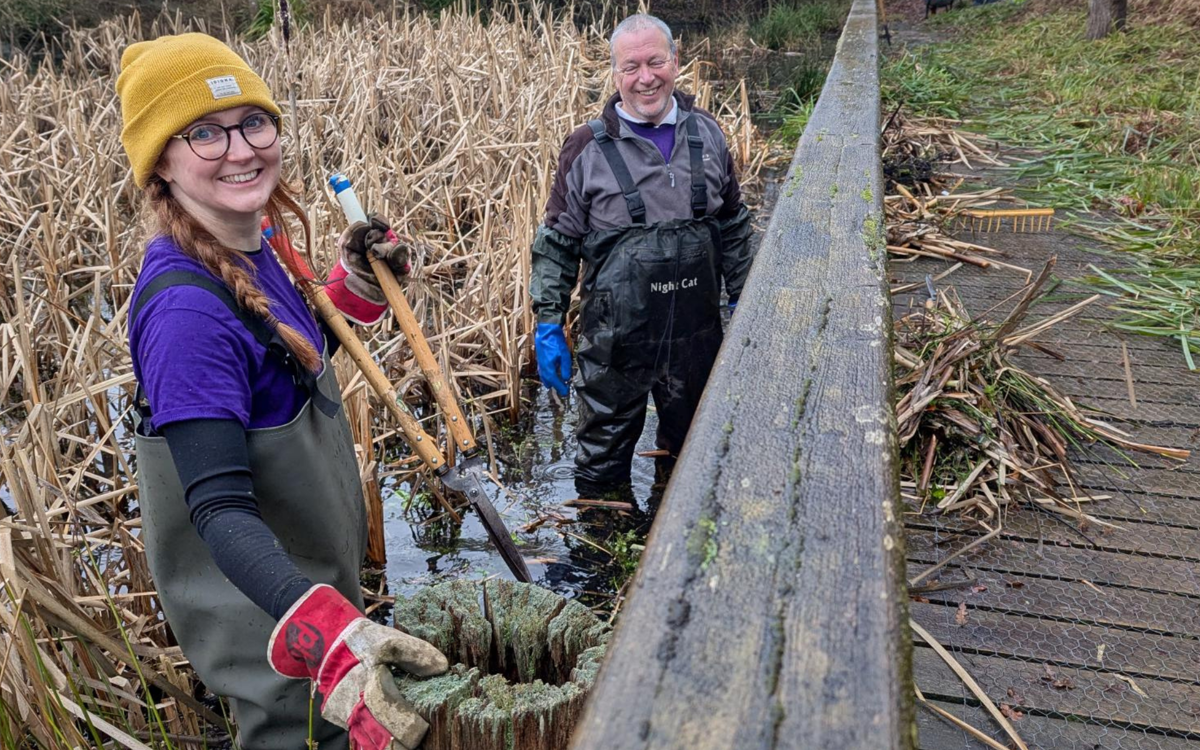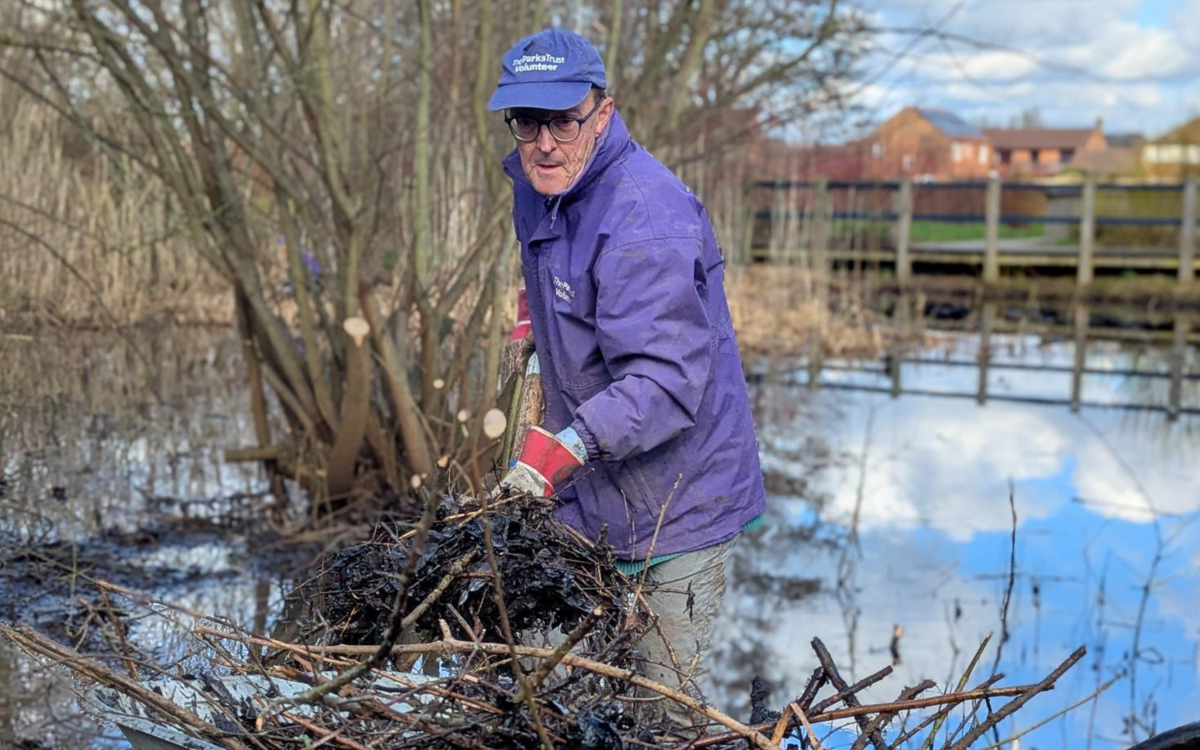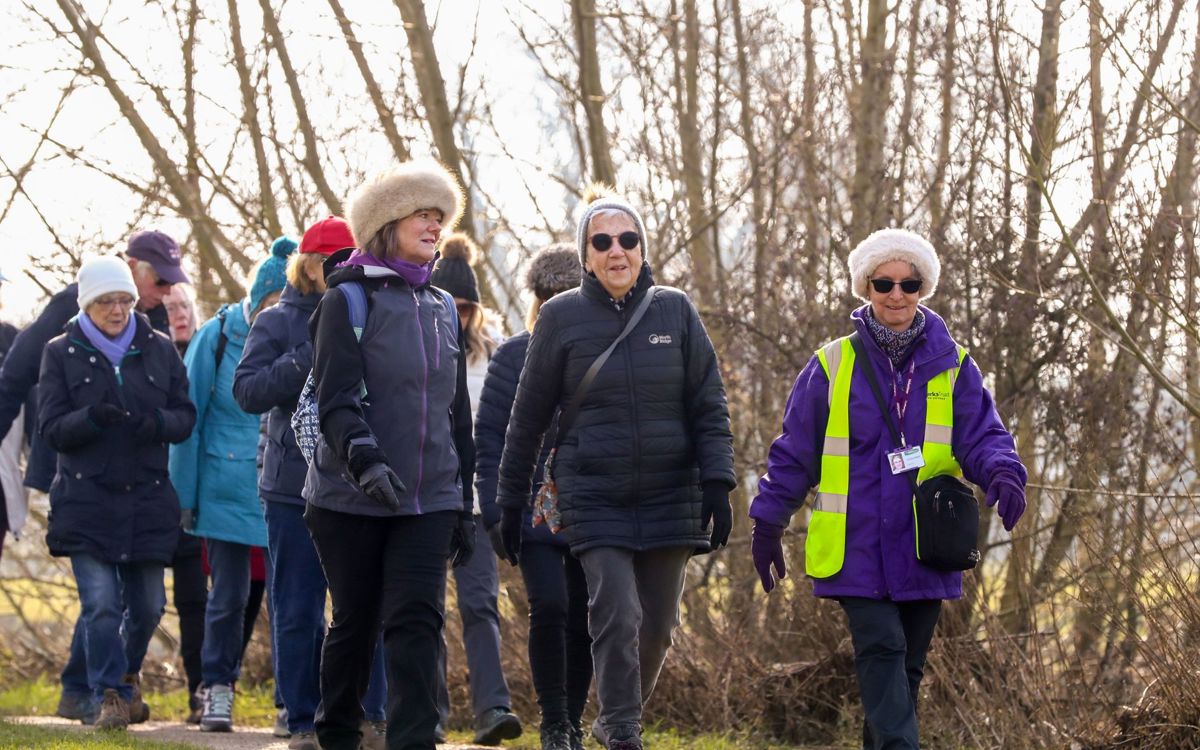
Published: 31/03/25
A pond in good health is an incredibly rich and varied habitat for wildlife. When the right environmental conditions allow, different aquatic plant species can grow and offer a range of habitats for all sorts of pond wildlife, such as dragonflies, newts and even birds such as herons and mammals like water shrews.
The condition of a pond can be affected by a number of reasons. Encroaching trees and scrub can cause shading, reducing available light for plant growth and the cooler habitat is less attractive for wildlife such as frogs. Leaf litter and debris rots in the water, increasing nutrient build up and therefore increasing algae growth. Debris also adds to the silt layer which will in time fill up the pond completely.
Our volunteers have been working hard this winter to help restore some of the ponds within your local parks. You may have seen the volunteers in action along the Caldecotte Brook at Browns Wood or Old Farm Park.
With the help of our team, they carried out work to the trees and shrubs to create open and sunny ponds to allow for plenty of light to help emergent plants to grow. They also removed lots of rotting leaf litter and thinned out excess aquatic vegetation to prevent nutrient build up.
Hopefully we shall see an increase in the number of different plant species within the ponds and if you're lucky, you may even catch a glimpse of a frog or a dragonfly!
Thank you to our conservation volunteers for their hard work on this project.






- Take your litter home
- Keep dogs out of the water
- Do not remove any spawn from the ponds
- Build a pond in your garden




